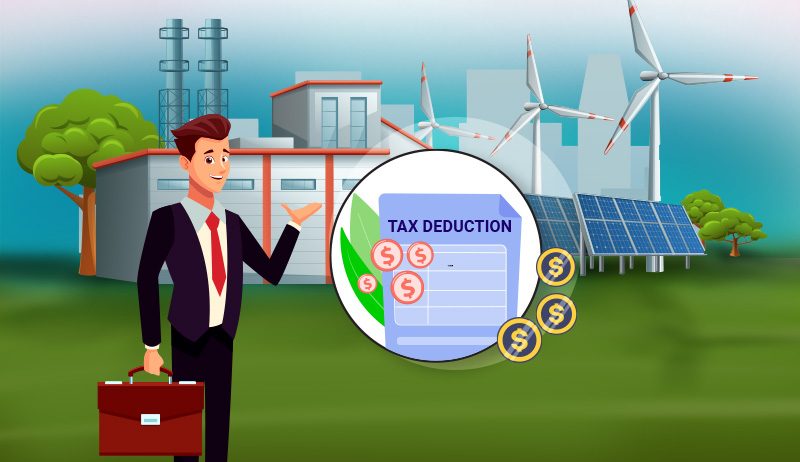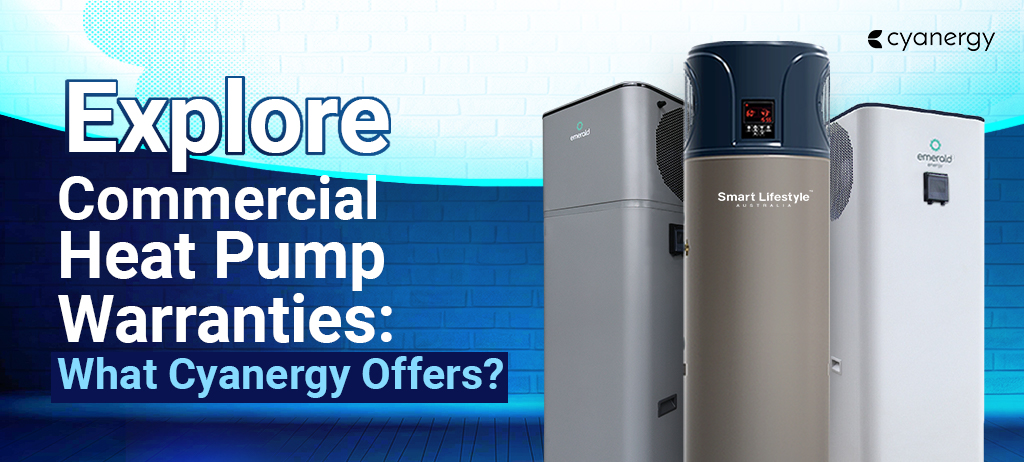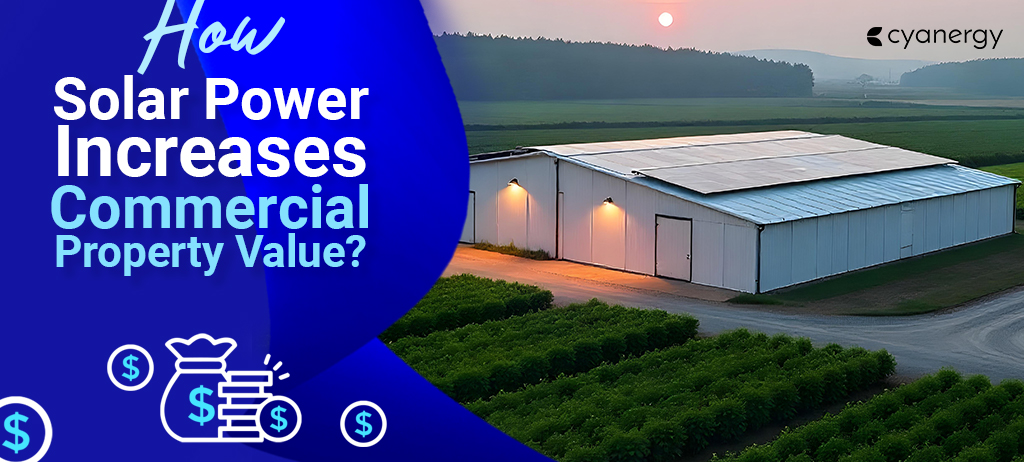Ready to step into a world where your business can harness the power of the sun? Welcome to the realm of commercial solar – where sun meets your business aspirations. It doesn’t matter if your business is big or small; adopting solar energy isn’t just about being environmentally conscious. It’s also a smart way to save money and boost your profit.
In this guide, we’re your trusted companions on a journey through the world of commercial solar energy benefits. Think of these benefits as rewards that come with using solar power. So, let’s dive in and discover how your business can shine brighter and operate more efficiently with commercial solar incentives.
What Is Commercial Solar Energy and How Does It Work?
At its core, commercial solar energy involves harnessing the boundless power of the sun to generate electricity for your business operations. It’s a sophisticated dance between cutting-edge technology and nature’s most abundant resource.
Imagine this: On your business’s rooftop or property, you install what are known as photovoltaic (PV) panels. These panels are like mini powerhouses that capture sunlight and convert it into usable energy. How? Well, that’s where the science comes into play.

Within these panels are solar cells, and these cells have an exceptional talent – they absorb photons (particles of sunlight) and, through a nifty process, release electrons. This release of electrons creates a flow of direct current (DC) electricity. But wait, most of our devices run on alternating current (AC) electricity. This is where the magic of inverters enters the scene.
Inverters are like the maestros of this symphony. They take the DC electricity from the solar panels and elegantly transform it into AC electricity, aligning it with the needs of your business. This AC electricity then courses through your establishment, powering everything from computers to coffee machines.
In a nutshell, commercial solar energy operates by collecting sunlight through solar panels, converting it into a usable form of electricity, and then seamlessly integrating it into your business’s energy grid. It’s a harmonious blend of innovative engineering and the awe-inspiring potency of the sun’s rays.
Return On Investment for Your Businesses If You Go Solar
There is no doubt that commercial solar definitely is an investment for any business. Any smart business owner would straighten out the numbers on what return on investment (ROI) would they be receiving before jumping the gun. So, here is an illustration of how to calculate the ROI of commercial solar investment, and a rough idea of the number you might be getting.
ROI lets you peek into the crystal ball and gauge how soon you’ll recover your initial investment, and when those sweet savings from reduced energy bills and potential incentives will start rolling in. Ready to dive in? Here’s your guide to calculating the ROI for a commercial solar setup:
ROI (%) = (Net Profit from Solar Investment / Total Cost of Solar Investment) x 100
- Net Profit from Solar Investment: This includes the savings on electricity bills and any additional revenue generated from selling excess energy back to the grid. Subtract the total cost of the solar investment (including installation, equipment, and maintenance) from these savings and revenues.
- Total Cost of Solar Investment: This encompasses the expenses associated with purchasing and installing the solar system, such as equipment, labor, permits, and any other related costs.
For example, let’s consider a hypothetical scenario:
- Total Cost of Solar Installation: $100,000
- Annual Savings on Electricity Bills: $15,000
- Annual Revenue from Selling Excess Energy: $5,000
- Annual Maintenance Costs: $1,000
Net Profit from Solar Investment = Annual Savings + Annual Revenue – Annual Maintenance
Net Profit = $15,000 + $5,000 – $1,000 = $19,000
ROI = ($19,000 / $100,000) x 100 = 19%
In this example, the ROI for the solar investment is 19%. This means that it would take approximately 5.3 years (100% / 19%) to recoup the initial investment through energy savings and revenue generation. Beyond this point, the solar system would continue to generate savings and revenue, contributing to the business’s bottom line.
It’s important to note that the ROI calculation can be influenced by various factors, including energy prices, solar system efficiency, financing terms, tax incentives, and local regulations. Additionally, as solar panel technology advances and costs continue to decrease, the ROI for solar installations is likely to improve over time.
Before making a decision, businesses should work with experienced solar professionals who can provide accurate cost estimates, assess the potential savings and revenue, and guide them through the process of evaluating the ROI. Additionally, considering the broader environmental and branding benefits of adopting renewable energy can add to the overall value proposition of a commercial solar investment.

What Are the Benefits of Adopting Commercial Solar for My Business?
Delving into the realm of commercial solar for your business offers a plethora of advantages that span both financial and environmental domains. Let’s explore the benefits that come with this strategic decision:
- Cost Savings: Embracing commercial solar energy can significantly reduce your business’s operational costs over the long run. By generating your own electricity from the sun, you can slash those hefty energy bills.
- Environmental Responsibility: As a business owner, you’re likely aware of the growing importance of sustainable practices. By adopting solar energy, you’re actively contributing to reducing your carbon footprint, thus positioning your business as an environmentally responsible entity.
- Enhanced Brand Image: Today’s consumers increasingly favor brands that demonstrate a commitment to sustainable practices. Going solar showcases your dedication to green initiatives, which can boost your brand’s reputation and appeal among environmentally-conscious clientele.
- Energy Independence: Relying on traditional energy sources leaves your business vulnerable to market fluctuations and supply disruptions. With commercial solar, you gain a degree of energy independence by producing your own power, reducing reliance on external sources.
- Long-Term Investment: While the initial investment may seem substantial, think of it as a long-term investment with substantial returns. The payback period can vary, but after that, the electricity you generate essentially becomes free, contributing directly to your bottom line.
- Lower Operating Risks: Solar panels have a proven track record of reliability and longevity. Their maintenance requirements are minimal, translating to lower operating risks and potential savings on unexpected repairs.
- Hedging Against Rising Energy Costs: Energy prices can be volatile, and your business may feel the impact. By generating your own power, you’re insulated from the effects of fluctuating energy prices.
- Community Engagement: Embracing solar energy aligns your business with a global movement towards sustainability. This can resonate with your local community, building positive relationships and bolstering your business’s standing.
What Maintenance Is Required for A Commercial Solar System?
Regular cleaning of the solar panels is crucial to prevent the accumulation of dust, dirt, pollen, and bird droppings that can hinder their ability to capture sunlight effectively. This can be done using water and a soft brush or sponge. However, always prioritize safety while performing this task.
Performing periodic visual inspections of your solar system is important. Look out for any signs of physical damage, loose connections, or wear. If any issues are observed, it’s advisable to involve a professional to address them promptly.
If your solar panels are surrounded by trees or shrubs, it’s important to ensure that foliage doesn’t cast shadows on the panels. Shadows can significantly reduce energy production. Regularly trimming overhanging branches can prevent this issue.
Checking the inverters is another crucial aspect of solar system maintenance. Inverters convert DC electricity to AC, and their proper functioning is essential. Many modern inverters have digital displays that provide real-time data, which can help you identify any irregularities.
Monitoring the performance of your solar system is recommended. If you notice a significant drop in energy generation, it could be an indication of an underlying issue that requires attention. While many maintenance tasks can be performed by your team, some complex tasks are best left to professionals. Scheduling periodic professional maintenance ensures that your system is operating optimally.
Additionally, reviewing the warranties on your solar panels and other components is important. If you encounter any issues covered by the warranty, reaching out to the manufacturer or installer for assistance is advisable.
Are There Any Financing Options Available for Commercial Solar Installations?
There are various financing options available to make commercial solar installations accessible and affordable for businesses. Here is a few-
- Outright Purchase: Businesses with available capital can choose to purchase the solar system upfront. While this requires a significant initial investment, it provides the highest long-term returns in terms of energy savings and potential incentives.
- Solar Loans: Many financial institutions offer solar loans specifically designed for businesses. These loans allow you to spread out the cost of the solar installation over a set period, making it more manageable for your budget. The interest rates and terms may vary, so it’s important to shop around for the best deal.
- Power Purchase Agreements (PPAs): PPAs are popular among businesses that prefer not to make an upfront investment. With a PPA, a third-party provider installs and owns the solar system on your property. You agree to purchase the electricity generated by the system at a predetermined rate, usually lower than traditional utility rates. This arrangement can provide immediate cost savings without the need for capital investment.
- Solar Leases: Similar to PPAs, solar leases involve a third-party company owning and maintaining the solar system on your property. Instead of purchasing the electricity, you pay a fixed monthly lease fee for using the solar energy. Leases can be beneficial for businesses looking for predictable energy costs without the financial commitment of ownership.
- On-Bill Financing: Some utility companies offer on-bill financing programs that allow businesses to finance their solar installations through their utility bills. This can streamline payments and make the financing process more convenient.

Can I Claim Tax Incentives and Rebates for My Commercial Solar Installation?
The Australian government, along with some state and territory governments, offers various incentives to promote the adoption of renewable energy sources and encourage businesses to contribute to a cleaner environment. Here’s how you can potentially benefit from these financial advantages:
- Small-scale Renewable Energy Scheme (SRES): The SRES, administered by the federal government, provides a financial incentive for eligible small-scale solar installations, including those for businesses. This incentive is often seen as a point-of-sale discount that significantly reduces the upfront cost of installing solar panels.
- Investment Tax Credits: Businesses can often claim tax credits for their solar installations through schemes like the SRES. These credits directly reduce the installation’s cost and can lead to substantial savings.
- Accelerated Depreciation: The Australian Tax Office (ATO) allows businesses to claim accelerated depreciation on solar assets through the Instant Asset Write-Off scheme. This means you can claim a larger deduction for your solar installation in the year it’s installed, rather than spreading it out over several years.
- State and Territory Incentives: Different states and territories in Australia may offer their own incentives and rebates to support businesses in adopting solar energy. These can include grants, feed-in tariffs, and other financial benefits.
- Grants and Rebate Programs: Some local councils and government agencies offer specific grants or rebate programs to businesses for adopting renewable energy solutions like solar. These programs can vary in scope and eligibility criteria.
- Consultation with a Tax Professional: Given the intricacies of tax codes and regulations, it’s strongly recommended to consult with a tax professional or financial advisor who specializes in renewable energy incentives in Australia. They can provide tailored advice based on your business’s unique circumstances and help you navigate the available incentives.
By tapping into these tax incentives and rebates, Australian businesses can substantially reduce the overall cost of their commercial solar installations. However, the availability of these incentives, along with the requirements for eligibility and claiming, can vary depending on your location, business structure, and other factors.







